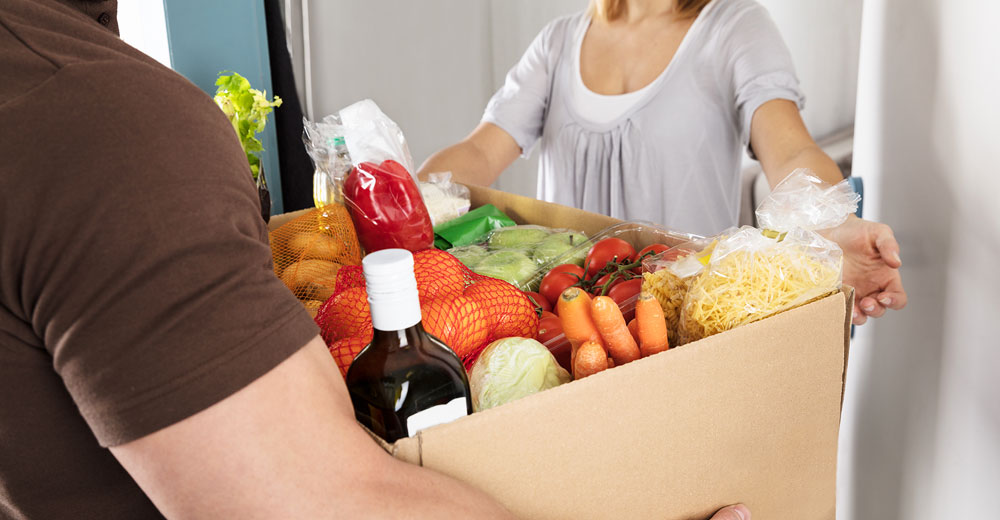Consumers were becoming increasingly comfortable with the idea of ordering food online, either for pick up or home delivery, even before the onset of the coronavirus pandemic. Now many more shoppers are turning to online grocery shopping for the first time.
“People have been comfortable ordering food such as pizza for delivery for years,” noted Commercetools Vice President of Americas Marketing Margaret Rea.
“Companies like Grubhub have helped expand options and expand people’s thinking about what they can order for meal delivery. It’s not a stretch to consider ordering meals from your favorite restaurant or even a DIY meal kit service, Rea told the E-Commerce Times. “People are more willing to try these things based on positive experiences with early food delivery.”
Food Solutions
Getting food is a stress point for many people, and online ordering and creative fulfillment strategies can be time-saving, anxiety-relieving solutions.
“Online shopping has become a lifestyle versus an isolated activity, driven in large part by people looking for more balance in their lives,” said Rea.
“Ordering from the office or the car for curbside pickup on the way home is one way that technology — especially online commerce — is helping people manage their busy lifestyles.”
The advent of new technologies and strategies is helping to make online food shopping convenient and stress-free, and perhaps even enjoyable.
“The customer experience is improving in both food and grocery delivery,” said Rea. “In Germany, for example, food giant REWE has a mobile app that allows people to add precise amounts of ingredients into their shopping cart based on a recipe they are making and the number of guests they are serving. This and other positive customer experiences make online grocery shopping seamless — and even a fun and social part of life.”
The availability of fast and reliable delivery options is another factor driving the growth of e-commerce food sales.
“One of the main reasons for the increase in online grocery purchases is convenience and being able to find what you are looking for quickly and easily,” observed Markus Stripf, CEO of Spoon Guru.
“Delivery times coming down rapidly is, of course, a major advantage,” he told the E-Commerce Times.
Delivered by Technology
A number of new, behind-the-scene technologies also are helping to drive the boom in online food and grocery sales, pick-up, and delivery. Walmart, for instance, has invested heavily in the technologies supporting its grocery pick-up and delivery services.
“Behind the scenes, Walmart has built a robust e-commerce engine and new operational processes that are all powered by customer data and insights,” said Bobby Greenberg, senior vice president of consulting for Kobie.
“Walmart has managed to marry humans and robots, so to speak, by providing Walmart+ users the ability to order groceries via text message, giving the ordering experience a personal touch and making it as seamless as possible,” he told the E-Commerce Times.
It’s a strategy that ultimately can build a lasting bond between consumers and particular brands and retailers.
“Many consumers are emotionally motivated to choose brands based on convenience and ease,” noted Greenberg. “Home delivery transforms the grocery-buying experience to the touch of a few buttons and can motivate people to develop new long-term habits with Walmart.”
Providing a curated grocery experience, along with targeted recommendations, can be an important part of selling consumers the value of online food shopping.
“Spoon Guru makes it easy for shoppers to find the right foods for their specific needs and health objectives by removing the friction from the search and discovery process and providing highly tailored recommendations based on their preferences and propensity,” said Stripf. “The advantages to the retailer are twofold: We drive customer value and loyalty.”
Using technology to fit together the many aspects of online food retailing — from inventory management to delivery — helps give consumers a sense of engagement and confidence.
“Commercetools’ APIs connect commerce capability — like cart, checkout, and product catalog — to any front-end as well as back-end systems, like inventory and fulfillment,” said Rea.
“Because each API is designed for a specific task, IT teams can build, create, experiment, and iterate at about four times the speed of older monolithic commerce platforms,” she explained, “enabling the tech team to respond faster to the needs and requests of the business. If, for example, customers want to purchase food for delivery via a social media channel like Facebook or an in-store IoT-based kiosk, the tech team can build out that functionality rapidly using Commercetools’ APIs.”
How consumers ultimately get their food — and how easy that process is made for them — is a key component of a successful food and e-commerce strategy.
“Food e-commerce companies understand the importance of delivery and increasingly let consumers choose a convenient delivery scenario,” said Tanya Yablonskaya, e-commerce industry analyst at ScienceSoft.
“Among the variants, which are the most popular with shoppers, are same-day or scheduled door-to-door delivery, click-and-pick, express delivery, and automatic subscription,” she told the E-Commerce Times.
Future Food
The food and e-commerce industry is expanding and evolving rapidly, changing the way people think about everything from restaurants to grocery stores.
“For decades, the food distribution and fulfillment industry stagnated with little innovation, forcing consumers to shop for food in the same old ways,” said Rea.
“The good news is that the future is bright. With advancements in e-commerce technology and the increasing acceptance of online food purchasing, delivery, and innovative pick-up options, consumers will have more choices than ever — not only in how they buy and receive their food but also in sources of locally grown foods like fruits, vegetables, dairy, eggs, and even flour,” she pointed out.
“Rural and urban consumers will be able to buy more food from local growers who offer seasonal harvests through an online shop or mobile app for delivery or pick-up,” Rea said.
Innovations in mobile technologies and creative ways of matching people with the food they want are likely to continue transforming the industry.
“In large metropolitan areas, improved customer experiences on mobile apps, shopping sites, and even in-car marketplaces — including real-time updates, flash sales on limited supply items, and loyalty programs — will continue to increase the adoption of online food buying and disrupt the entire food distribution industry,” said Rea.
Evolving along with the market and with consumer demand ultimately will be key to the survival of food retailers.
“More than one in three Americans now buy groceries online, and retailers are racing to grab a bigger slice of that pie, so expect some significant developments from the big players as well as the smaller ones over the next few years,” said Stripf. “Those who innovate will thrive, but those who stand still will not be able to compete for much longer.”
























































Social Media
See all Social Media